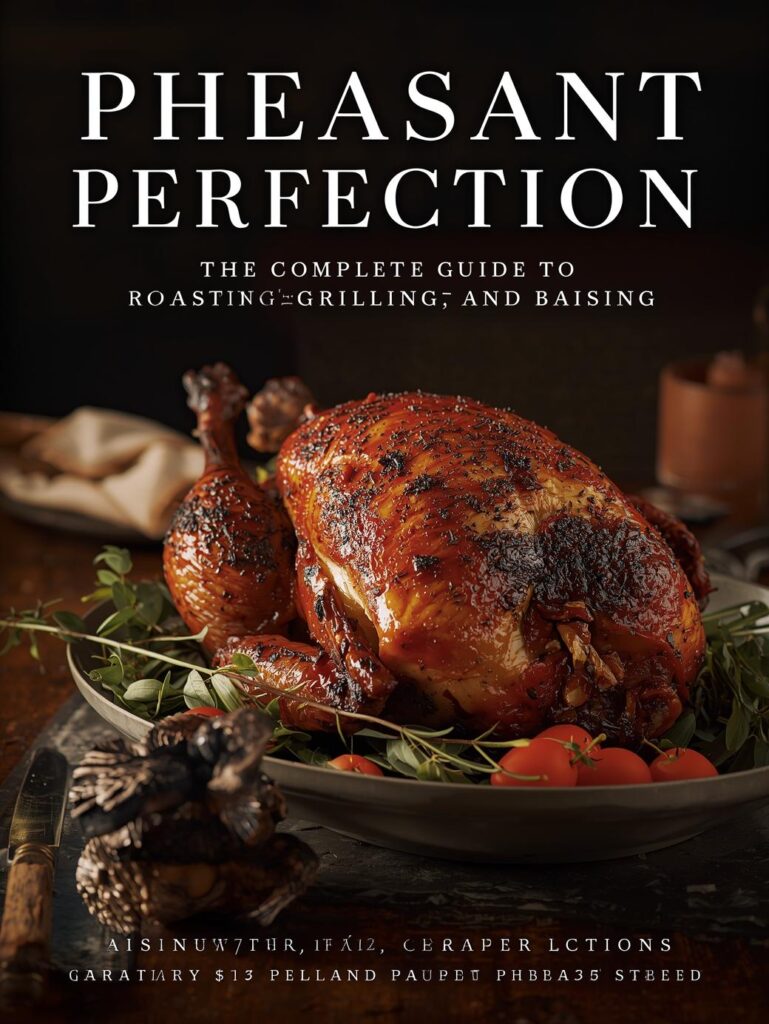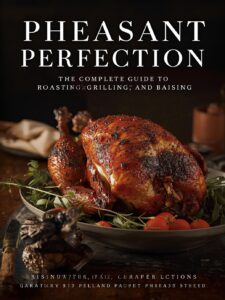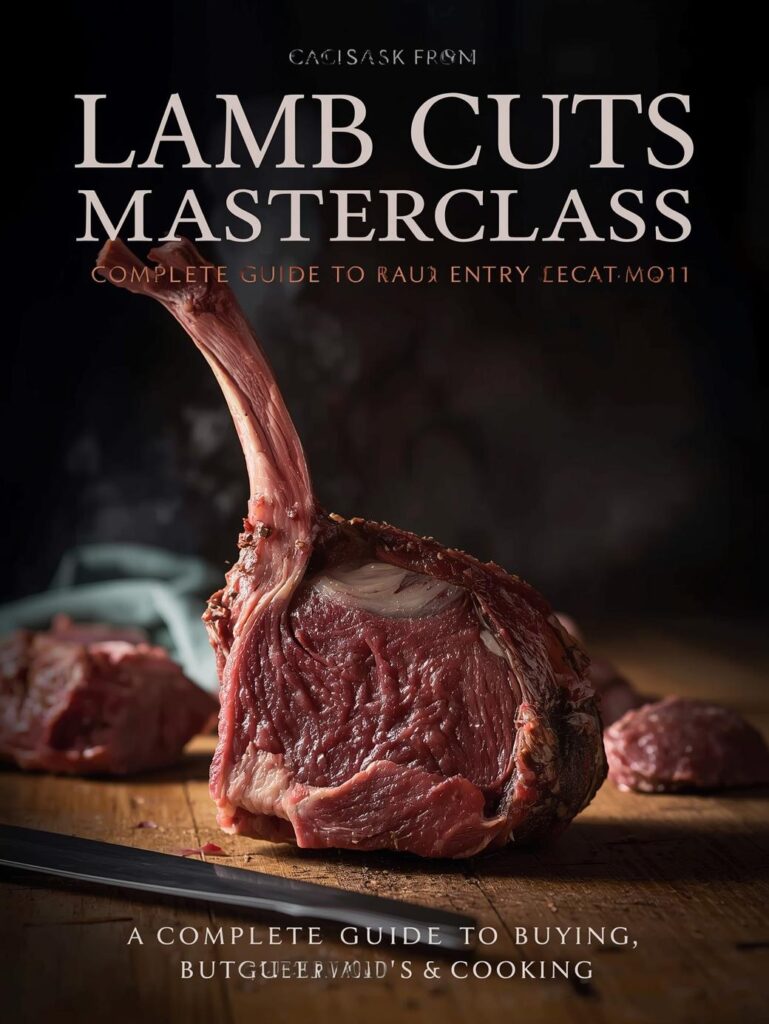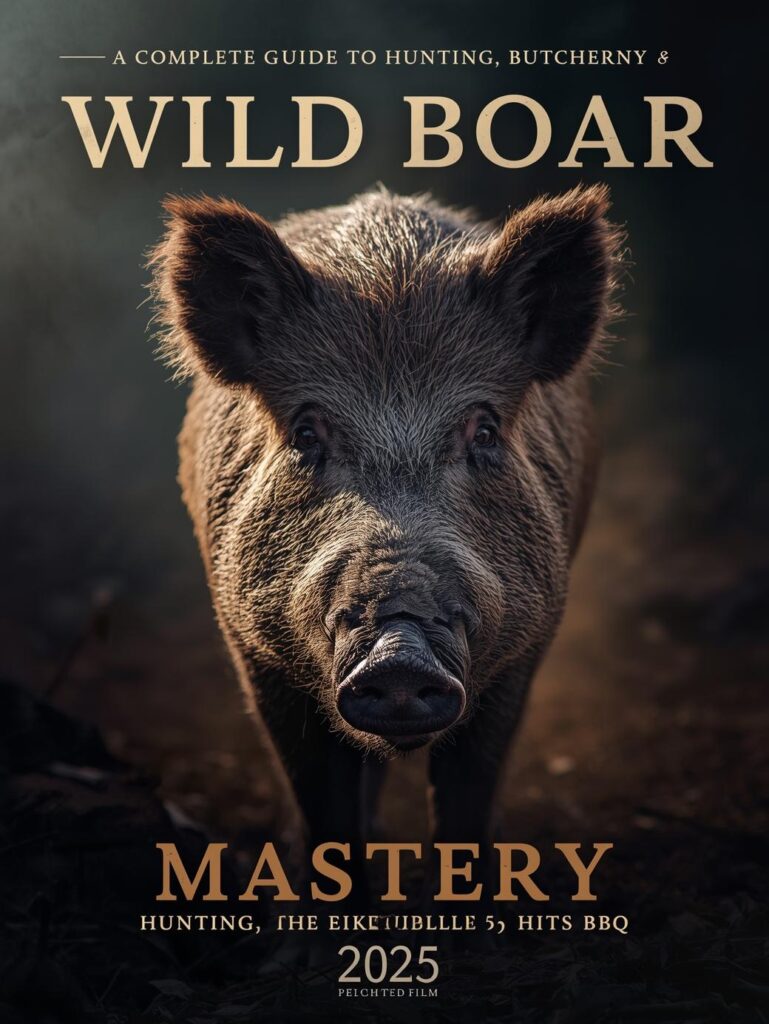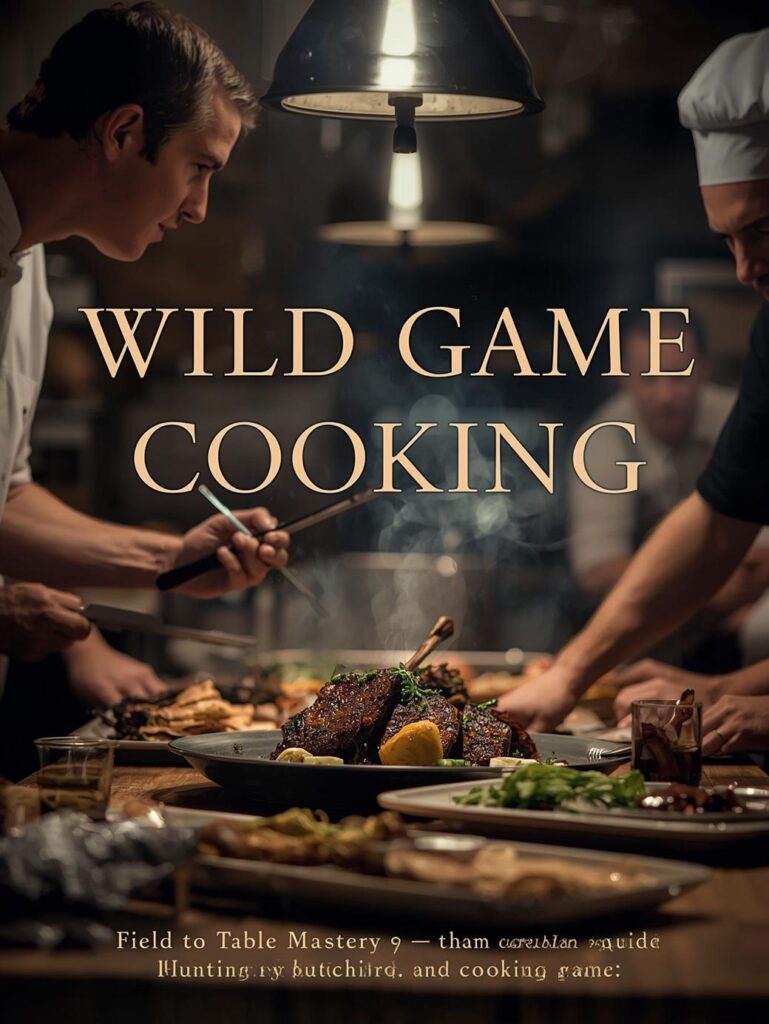The Gentleman of Game Birds: Pheasant is the perfect introduction to the world of wild game—it’s approachable, elegant, and carries just enough wild character to be interesting without being intimidating. Where duck is rich and goose is fatty, pheasant is lean, subtle, and refined. This isn’t a blunt instrument of flavor; it’s a delicate brushstroke that rewards technique, patience, and an understanding of how to cook a bird that has actually flown.
Pheasant Perfection: The Complete Guide to Roasting, Grilling, and Braising
“Pheasant is the bridge between the familiar and the wild. It has the leanness of a chicken breast but whispers the flavors of the field—a subtle gaminess, a hint of nuttiness, a story in every bite. Cooking it is a lesson in balance: you must protect its delicate breast from the harshness of direct heat while coaxing tenderness from its hard-working legs. Master this dance, and you unlock the secret to all game birds.”
Pheasant Perfection: The Complete Guide to Roasting, Grilling, and Braising
Download Our Pheasant Quick-Reference - Roasting Times, Temperatures & Recipes
For centuries, the ring-necked pheasant has been the crown jewel of the game bird world, symbolizing both the challenge of the hunt and the reward of the table. But many home cooks are intimidated, fearing dry breast meat or an overpowering “gamey” flavor. The truth is, pheasant is remarkably forgiving when you understand its simple anatomy and apply a few key techniques. This guide will transform this majestic bird from a mysterious trophy into a reliable, spectacular centerpiece for any dinner.
🎯 PHEASANT VS. CHICKEN: THE ULTIMATE BIRD BATTLE
Knowing the differences is the first step to cooking it perfectly.
🦚 PHEASANT PROFILE
- Flavor: Mildly gamey, nutty, slightly sweet
- Texture: Fine-grained, very lean
- Breast Meat: Pale, delicate, dries out easily
- Leg/Thigh Meat: Dark, tough, rich in connective tissue
- Cooking: Demands dual-method cooking
🐔 CHICKEN PROFILE
- Flavor: Mild, neutral, versatile
- Texture: Soft, can be fatty (depending on cut)
- Breast Meat: Forgiving, holds moisture well
- Leg/Thigh Meat: Tender, fatty, forgiving
- Cooking: Simple, single-method often works
🔪 THE PHEASANT BUTCHER’S GUIDE: A BIRD OF TWO HALVES
You cannot cook a pheasant whole like a chicken. The breast and legs demand different treatments.
🎯 Pheasant Anatomy & Method Matrix
🎯 The Key to Pheasant: Treat the Breast and Legs Separately
| Cut | Description | Best Cooking Method | Target Internal Temp | Key Tip |
|---|---|---|---|---|
| Breast | Lean, delicate, white meat | Sear, roast, grill (hot & fast) | 150-155°F | Cook to medium, not well-done |
| Legs & Thighs | Dark, tough, connective tissue | Braise, confit, slow roast | 175-185°F | Low & slow until fork-tender |
| Whole Bird | The classic presentation | Spatchcock & roast | Breast 155°F / Thigh 175°F | Spatchcocking is non-negotiable |
| Wings | Small, bony, little meat | Stock, soup, confit | N/A | Best used for flavor, not eating |
| Carcass | Bones, backbone, neck | Stock, bone broth | N/A | Makes the most incredible soup base |
👑 THE CROWN JEWEL: SPATCHCOCKED ROAST PHEASANT
The only way to roast a whole bird evenly and achieve perfect breast and leg doneness.
⚡ The 5-Step Spatchcock Perfection
Flatten the Bird for Even Cooking Glory
- Step 1: Remove the Backbone: Using sharp kitchen shears, cut along both sides of the backbone and remove it. (Save it for stock!). Spatchcocking guide here.
- Step 2: Flatten the Bird: Turn the bird breast-side up and press down firmly on the breastbone until it cracks and the bird lies flat.
- Step 3: Dry Brine (Critical): Salt the bird generously and leave it uncovered on a rack in the fridge for 4-24 hours. This seasons the meat and dries the skin for crispness.
- Step 4: Season & Add Fat: Tuck herbs and aromatics under the skin. Brush the skin with olive oil or melted butter to promote browning.
- Step 5: Roast Hot & Fast: Roast at 450°F for 25-35 minutes, until the breast reads 155°F and the thighs are around 175°F. Rest for 10 minutes before carving.
🔥 THE DUAL-METHOD MASTERY: BREASTS VS. LEGS
For the ultimate pheasant experience, break it down and cook each part perfectly.
🍗 SEARED PHEASANT BREASTS
Hot, Fast, and Perfectly Pink
- Preparation: Remove breasts from bone, leave skin on. Pat dry and bring to room temp.
- Sear: Skin-side down in a cold, oven-proof skillet. Render fat over medium heat for 5-7 mins until skin is golden and crisp.
- Finish: Flip, add butter and herbs, and baste for 1-2 minutes. Finish in a 400°F oven until internal temp reaches 150-155°F. Pan-searing mastery.
- Rest: Rest for 5-10 minutes before slicing against the grain.
🍖 BRAISED PHEASANT LEGS
Low, Slow, and Fall-Off-the-Bone
- Preparation: Season legs generously. Sear in a hot Dutch oven until browned on all sides.
- Braise: Add mirepoix, garlic, herbs, and enough liquid (wine, stock) to come halfway up the legs. Cover and simmer on stovetop or in a 325°F oven for 1.5-2 hours. Braising guide here.
- Finish: Meat should be fork-tender and pulling away from the bone. Reduce braising liquid into a sauce.
- Serve: Perfect over creamy polenta, mashed potatoes, or wild rice.
🧂 THE FLAVOR BRIDGE: TAMING & ENHANCING
Pheasant’s mild gaminess is a canvas for classic, complementary flavors.
🎯 The Pheasant Flavor Pairing Matrix
Building the Perfect Flavor Profile
- The Fat Bridge (Barding & Larding): Since pheasant is so lean, add fat. Drape bacon over the breast, stuff butter under the skin, or lard with pork fat. This bastes the meat from the outside in.
- The Aromatic Foundation: Classic herbs like thyme, rosemary, and sage are pheasant’s best friends. Garlic, shallots, and leeks build a savory base.
- The Acidic Lift: A splash of white wine, brandy, or a squeeze of lemon at the end of cooking cuts through the richness and brightens the dish.
- The Sweet Complement: Apples, pears, dried cherries, and grapes mirror the bird’s natural foraging diet and add a touch of sweetness.
- The Earthy Connection: Wild mushrooms, root vegetables, and nuts (like pecans or walnuts) ground the dish and enhance the “wild” character.
🚨 PHEASANT TROUBLESHOOTING: FIX COMMON MISTAKES
🎯 Pheasant Cooking Rescue Guide
| Problem | Cause | Immediate Fix | Prevention |
|---|---|---|---|
| Dry, Chewy Breast | Overcooked | Slice thin, serve in a creamy sauce or salad. | Use a thermometer; pull at 155°F; brine or bard with fat. |
| Tough, Rubbery Legs | Undercooked connective tissue | Return to braising liquid and cook longer until tender. | Cook legs low & slow to 175°F+; braise or confit. |
| Pale, Soggy Skin | Insufficient heat, wet skin | Broil for 2-3 minutes at the end, watching closely. | Dry brine; pat skin bone-dry; roast at high temp (450°F+). |
| Overly “Gamey” Flavor | Older bird, poor handling | Shred meat and use in a heavily seasoned pot pie or curry. | Source young hen; use a buttermilk brine; pair with sweet/fatty elements. |
| Unevenly Cooked Whole Bird | Roasted whole, not spatchcocked | Carve, finish legs in braising liquid and breasts in a warm oven. | Always spatchcock. It’s the single most important technique. |
🏁 YOUR GATEWAY TO GAME BIRD MASTERY
Pheasant is more than just a meal; it’s your introduction to a wider, wilder world of flavor. The techniques you learn here—spatchcocking for even cooking, the dual-method approach for different muscles, the use of fat and aromatics to bridge flavors—are the foundational skills for cooking all game birds, from grouse to guinea fowl.
Start with a simple spatchcocked roast. Respect the bird by cooking its parts differently. Pair it with the classic flavors of the harvest. You’ll discover that pheasant isn’t intimidating—it’s inspiring. It’s a reminder that the best food often comes with a story, and that a little technique can transform the wild into the wonderful.
Deepen your knowledge with our complete guide to cooking all game meats
No posts selected. Please provide either "slugs" or "ids" parameter.
Continue Your Poultry & Game Journey: Build on your skills with these essential guides.

